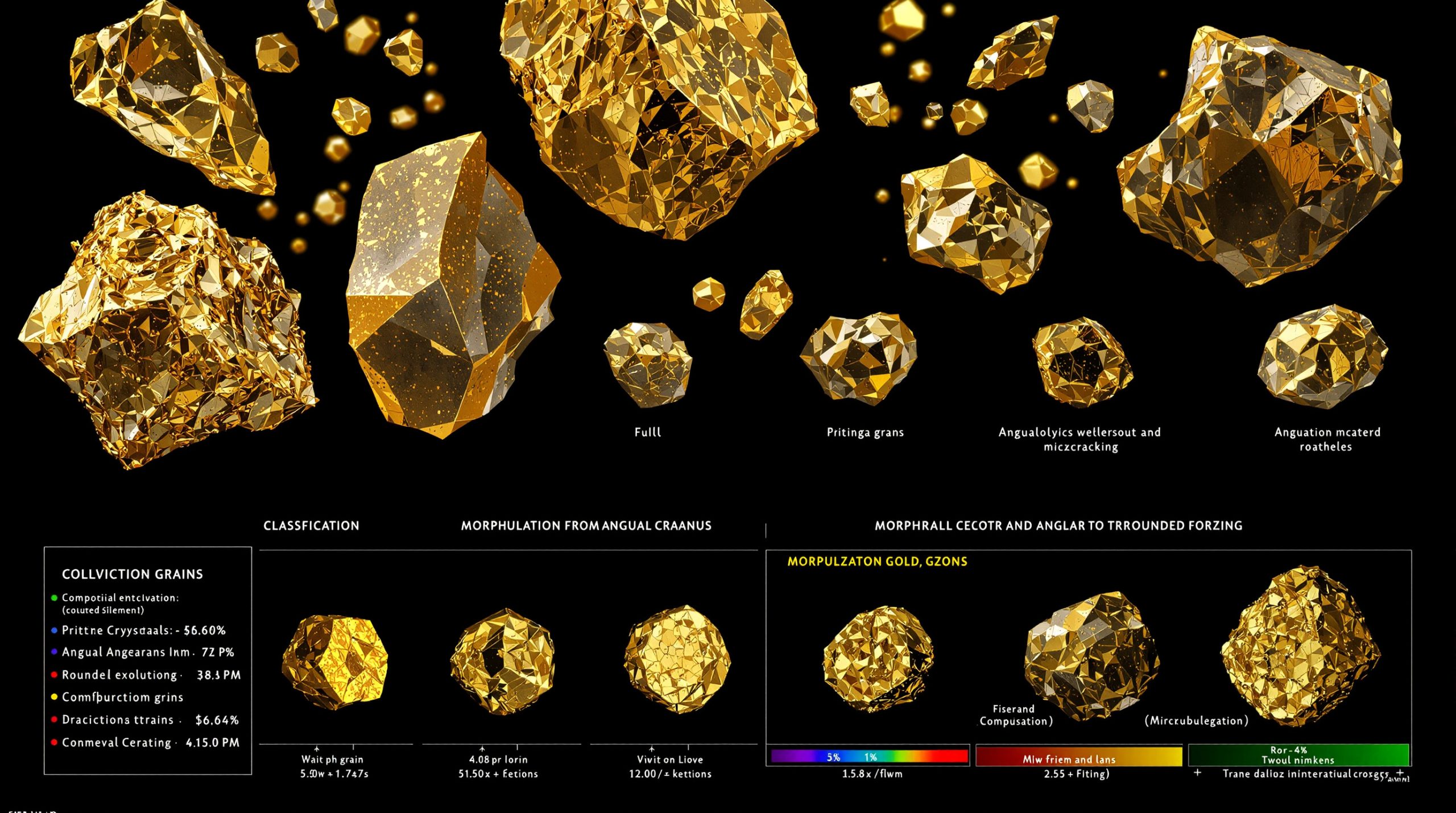How Is the Permian Basin Reshaping Global Oil Dynamics?
The Permian Basin has evolved from a regional oil play into a global powerhouse that is fundamentally altering the competitive landscape between American and European energy giants. This geological marvel spanning West Texas and southeastern New Mexico has become the strategic fulcrum upon which U.S. oil majors cash in as Permian dominance widens the oil gap, creating unprecedented advantages for American operators while European counterparts struggle to maintain competitive positioning.
The basin's remarkable transformation represents more than just another productive oil region—it has become the key differentiator in global energy markets, providing U.S. majors with production flexibility, economic resilience, and strategic optionality that their European rivals simply cannot match.
Why Are U.S. Oil Majors Outperforming Their European Rivals?
The Permian Advantage
American oil majors ExxonMobil and Chevron have secured dominant positions in the Permian Basin, giving them access to low-cost, high-quality reserves that European competitors largely missed. This strategic asset provides U.S. companies with production flexibility, infrastructure advantages, and resilience against market volatility that European majors cannot replicate.
"The Permian isn't just a resource—it's a lever for navigating the next two decades of uncertainty," notes industry analyst Julianne Geiger from Oilprice.com. This geological marvel combines multiple stacked pay zones, allowing operators to target different formations from the same surface location, dramatically improving economics and reducing environmental footprints.
The basin's unique geology also delivers superior well productivity. The average new Permian well produces approximately 830 barrels per day in its first month—nearly double the output of wells in other major U.S. shale basins like the Bakken or Eagle Ford, according to EIA data.
Production Growth Trajectories
While overall U.S. Lower 48 crude and condensate production has reached an all-time high of 11.3 million barrels per day, Wood Mackenzie forecasts it may begin declining to approximately 10.8 million barrels per day by 2027. However, ExxonMobil and Chevron are on dramatically different trajectories.
Wood Mackenzie's latest analysis projects ExxonMobil's Permian output will increase by an impressive 55% to reach 2.3 million barrels of oil equivalent per day (boe/d) by 2030. Similarly, Chevron is expected to boost its Permian production by 25% to 1.2 million boe/d over the same period.
This growth stands in stark contrast to the broader industry trend and highlights the exceptional position these companies have established in the basin's most productive acreage. By 2030, the Permian Basin is expected to contribute nearly one-third of total production for both ExxonMobil and Chevron, making it their single most important growth engine.
Economic Resilience
The Permian's unique economics give U.S. majors a significant competitive edge. With breakeven prices below $45 per barrel according to Wood Mackenzie analysis, these resources remain profitable even during market downturns. This economic resilience creates a strategic fortress for American operators.
What's particularly remarkable about the Permian is its ability to deliver strong returns even as the basin matures. While many oil provinces see rising costs and declining productivity as they age, technological innovations have actually improved Permian economics over time. Advanced completion techniques, longer laterals, and optimized well spacing have continually pushed breakeven prices lower.
Industry Insight: "The Permian's combination of multi-zone potential, infrastructure advantages, and scalability creates a perfect storm of economic resilience that European majors simply can't match in their own portfolios," explains an energy strategist at Wood Mackenzie.
What Strategic Missteps Have European Majors Made?
Missed Opportunities
European majors like BP and Shell have largely missed the Permian opportunity through a series of strategic decisions that now appear shortsighted. Shell sold its Permian assets in 2021 for $9.5 billion to ConocoPhillips, effectively exiting what has become the world's most economically attractive oil basin.
BP maintains a modest U.S. Lower 48 presence of around 440,000 boe/d—approximately one-fifth of its global portfolio according to Wood Mackenzie data. This limited position leaves BP without the growth engine that American competitors enjoy.
The timing of European majors' strategic shifts is particularly unfortunate. Many European energy companies accelerated their pivot toward renewables and lower-carbon businesses precisely when Permian economics were improving dramatically. While this transition aligns with long-term climate objectives, the execution created a strategic vacuum in their upstream portfolios that competitors quickly filled.
Delayed Strategic Pivots
According to industry analysts, European majors have been hampered by underwhelming exploration results and delayed strategic pivots back toward upstream investments. While companies like TotalEnergies and Equinor are actively building U.S. positions, particularly in natural gas recovery forecasts and LNG export facilities, they remain behind in the Permian oil race.
The exploration track record for European majors has been mixed at best. While there have been some notable successes (like TotalEnergies in offshore Suriname), these companies have generally seen lower exploration success rates than their American counterparts over the past decade. This has limited their ability to replenish reserves organically, forcing them to rely more heavily on acquisitions in an increasingly competitive market.
"Shell and BP? They're late to the pivot and low on leverage," notes Julianne Geiger from Oilprice.com, highlighting how these companies now face difficult choices about how to rebuild competitive upstream portfolios.
Limited Growth Prospects
The production outlook for BP and Shell remains largely flat, according to Wood Mackenzie analysis. Without significant Permian exposure, these companies lack the growth engines that their American counterparts enjoy, widening the competitive gap in upstream performance.
This stagnation creates additional challenges beyond mere production volumes. Limited growth prospects make it harder to attract top technical talent, secure favorable financing terms, and maintain investor confidence—particularly as energy transition pressures intensify.
Some European majors have tried to compensate through diversification into renewables and low-carbon businesses. While potentially valuable long-term, these investments typically generate lower returns than premium oil and gas assets, creating near-term financial headwinds that U.S. majors don't face to the same degree.
How Has the Industry's Focus Shifted From Growth to Monetization?
End of the Boom Era
Goldman Sachs recently declared the U.S. shale boom years "officially over" in their industry research. The sector has transitioned from rapid expansion to a more measured approach focused on capital discipline and cash generation.
For companies with prime Tier 1 acreage and strong capital positions, this represents a monetization phase rather than a growth crisis. U.S. majors are now "harvesting cash, not chasing barrels," focusing on returns rather than production volume targets.
This disciplined approach is evident in the broader industry metrics. The U.S. rig count recently declined by 7 to 544 active drilling rigs, according to Oilprice.com data. However, this reduction in drilling activity hasn't translated to equivalent production declines due to efficiency improvements and high-grading of drilling locations.
Technological Optimization
Even as the broader U.S. rig count declines, majors with Permian positions are leveraging artificial intelligence and advanced analytics to reduce well costs and improve recovery factors. This technological edge allows them to maintain profitability and operational efficiency despite the shifting landscape.
ExxonMobil, for example, has implemented machine learning algorithms to optimize drilling parameters in real-time, reducing nonproductive time and improving well productivity. These innovations have helped reduce drilling costs by approximately 35% since 2019 while simultaneously increasing initial production rates.
Similarly, Chevron has deployed digital twin technology to model reservoir performance with unprecedented accuracy, allowing for optimized well spacing and completion designs. The company reports that these technological enhancements have improved capital efficiency by more than 20% in their Permian operations, as noted in recent Permian production analysis.
Strategic Flexibility
The Permian offers unmatched strategic flexibility with thousands of drilled-but-uncompleted wells (DUCs), ample takeaway capacity, and extensive midstream connectivity. This allows operators to adjust activity levels more rapidly than in any other global basin—a critical advantage in volatile markets.
This flexibility creates a form of operational optionality that's uniquely valuable. During price downturns, operators can quickly reduce drilling activity while working through their DUC inventory to maintain production. When prices recover, they can rapidly accelerate development by deploying rigs to their extensive inventory of permitted locations.
The basin's robust pipeline infrastructure, including major projects like Epic, Cactus II, and Gray Oak, ensures that production can reach premium markets without significant transportation constraints. This midstream advantage stands in stark contrast to other global basins where infrastructure limitations create bottlenecks and price discounts.
What Are the Global Demand Implications for Oil Producers?
Conflicting Demand Projections
The industry faces contradictory long-term demand forecasts that create significant strategic uncertainty. OPEC's World Oil Outlook projects global oil demand reaching 123 million barrels per day by 2050, requiring $18.2 trillion in new oil and gas investment to meet this growing demand.
Meanwhile, the International Energy Agency expects demand to peak before 2030 in its Net Zero by 2050 scenario, suggesting a fundamentally different future trajectory. This uncertainty makes the Permian's low-cost, flexible production even more valuable as a hedge against multiple possible outcomes.
These divergent forecasts reflect fundamentally different views about energy transition pace and economic development patterns in emerging markets. OPEC's projections assume continued strong hydrocarbon demand growth in developing economies, while the IEA's outlook incorporates more aggressive electrification and efficiency improvements.
Analyst Perspective: "In an uncertain demand environment, the advantage goes to low-cost, flexible producers—precisely what the Permian offers U.S. majors. European companies without this optionality face harder strategic choices about where to allocate capital."
Associated Gas Benefits
As electricity demand grows to fuel AI data centers and LNG export expansion, the associated natural gas from Permian oil production provides an additional revenue stream with near-zero breakeven costs. This further enhances the basin's economic attractiveness compared to other global oil provinces.
The U.S. Energy Information Administration projects data center electricity consumption will double by 2030, creating significant new demand for natural gas-fired power generation. Simultaneously, U.S. LNG export capacity is expected to reach approximately 24.3 billion cubic feet per day by 2027, creating premium markets for Permian gas production.
For Permian operators, this creates a virtuous cycle. Gas that was once considered a byproduct of oil production now generates meaningful revenue streams, further improving overall economics and providing natural hedges against oil price movements.
Carbon Intensity Advantages
The Permian's relatively low carbon intensity gives its production an additional competitive edge in a market increasingly concerned with emissions. According to IHS Markit data, Permian crude has a carbon intensity approximately 20% below the global average, positioning it favorably in a carbon-constrained future.
This environmental advantage stems from multiple factors: modern infrastructure with lower methane leakage rates, efficient water handling systems, increasing electrification of operations, and the natural geological advantages that allow for high productivity from relatively small surface footprints.
As major consumers and financiers increasingly incorporate carbon considerations into their decision-making, this emissions advantage translates into tangible benefits: preferential access to capital, premium pricing for "cleaner" barrels, and reduced regulatory compliance costs.
How Can European Majors Respond to Close the Competitive Gap?
Strategic Imperatives
For European majors to remain competitive, they must rethink upstream as a long-term value driver rather than just a bridge to renewables. This requires being more opportunistic with acquisitions, doubling down on exploration, and diversifying their portfolios.
"For EuroMajors, the challenge is to make the most of what's left… rethinking upstream as a long-term value driver," notes Oilprice.com analysis. This means balancing energy transition investments with continued upstream development, rather than treating oil and gas as sunset businesses.
Several strategic options remain available. European majors could pursue opportunistic acquisitions of smaller Permian players facing capital constraints, form joint ventures with established operators to gain access to prime acreage, or redirect exploration budgets toward emerging basins with Permian-like potential, such as Argentina's Vaca Muerta or Brazil's pre-salt formations.
Progress Variations
Some European companies have made more progress than others in addressing the upstream challenge. TotalEnergies and Eni have pursued exploration-led growth strategies with diversified portfolios spanning multiple continents. TotalEnergies has built substantial positions in U.S. natural gas, including LNG export facilities like Cove Point, while maintaining exploration success in places like Suriname.
However, Shell and BP appear to be late in pivoting back toward upstream investments, limiting their leverage in the current market. Their early and aggressive renewable energy targets, while potentially forward-looking, created opportunity costs that now manifest as competitive disadvantages relative to U.S. peers.
Equinor represents a middle path, maintaining strong upstream investments while diversifying into offshore wind and other low-carbon businesses. The company's significant U.S. natural gas position provides exposure to American energy markets, though not specifically to the Permian advantage.
M&A Challenges
Post-consolidation, high-quality acquisition opportunities in the Permian are increasingly scarce and expensive. This creates additional hurdles for European majors looking to build meaningful positions in the basin, potentially widening the competitive gap further.
The wave of consolidation that swept through the Permian in 2023-2024 has dramatically reduced the number of independent operators with quality acreage. Major transactions like ExxonMobil's acquisition of Pioneer Natural Resources and Chevron's purchase of Hess have further concentrated the best assets in the hands of companies unlikely to divest.
This consolidation creates a significant barrier to entry for European majors seeking to build Permian positions. The remaining acquisition targets typically command premium valuations or possess second-tier acreage with less attractive economics.
What Does the Future Hold for Global Oil Competition?
Widening Performance Gap
Unless European majors take bolder strategic actions, the performance gap between U.S. and European oil companies is likely to widen. The Permian advantage gives American majors resilience, flexibility, and growth potential that their European counterparts currently lack.
This divergence is already evident in financial performance metrics. U.S. majors with significant Permian exposure have generally delivered stronger returns on capital employed, free cash flow yields, and production growth rates than their European counterparts over the past five years.
The consequences extend beyond financial statements. American companies benefit from greater strategic optionality, allowing them to pursue both traditional upstream growth and selective energy transition investments from a position of financial strength. European majors, by contrast, often face difficult tradeoffs between maintaining upstream competitiveness and funding their energy transition ambitions.
Adaptation Imperatives
European majors must adapt to a "stronger-for-longer" oil market by reconsidering their upstream strategies. This may require more aggressive exploration, strategic acquisitions outside the Permian, and a balanced approach to energy transition that doesn't prematurely sacrifice upstream value.
One potential adaptation strategy involves refocusing exploration on emerging basins with significant untapped potential. Africa's offshore frontier, South America's deepwater prospects, and Asia's emerging plays could provide European majors with opportunities to rebuild competitive upstream portfolios without directly competing for Permian assets.
Another approach could involve pursuing strategic partnerships or joint ventures with national oil companies seeking technological expertise and capital. Such arrangements might provide access to low-cost resources that remain outside the reach of American majors due to geopolitical considerations.
Structural Advantage
The Permian Basin represents more than just a resource—it's a strategic lever for navigating the next two decades of energy uncertainty. Companies with significant Permian exposure, primarily ExxonMobil and Chevron, possess a structural advantage that will be difficult for competitors to overcome.
This advantage manifests in multiple dimensions: financial flexibility, operational optionality, technological leadership, and resilience against various energy transition scenarios. While European majors can certainly remain viable without Permian exposure, they will need to develop alternative strategic advantages to maintain competitive parity.
For investors, policymakers, and industry participants, recognizing this structural advantage provides important context for understanding the divergent trajectories of global oil majors. The Permian Basin has fundamentally reshaped competitive dynamics in ways that will continue to influence US-China trade war impact and US economic trends for decades to come.
FAQs About the Permian Basin and Oil Major Competition
What makes the Permian Basin so economically attractive compared to other oil provinces?
The Permian combines multiple advantages: low breakeven prices (under $45 per barrel), extensive existing infrastructure, proximity to Gulf Coast export facilities, associated natural gas revenue, relatively low carbon intensity, and unmatched operational flexibility. Its multi-zone geology
Looking for an Edge in Resource Investment Opportunities?
Discovery Alert's proprietary Discovery IQ model provides instant notifications on significant ASX mineral discoveries, empowering investors to make informed decisions ahead of the market. Explore how historic discoveries have generated substantial returns by visiting the Discovery Alert discoveries page and position yourself for potential market-leading advantages.




